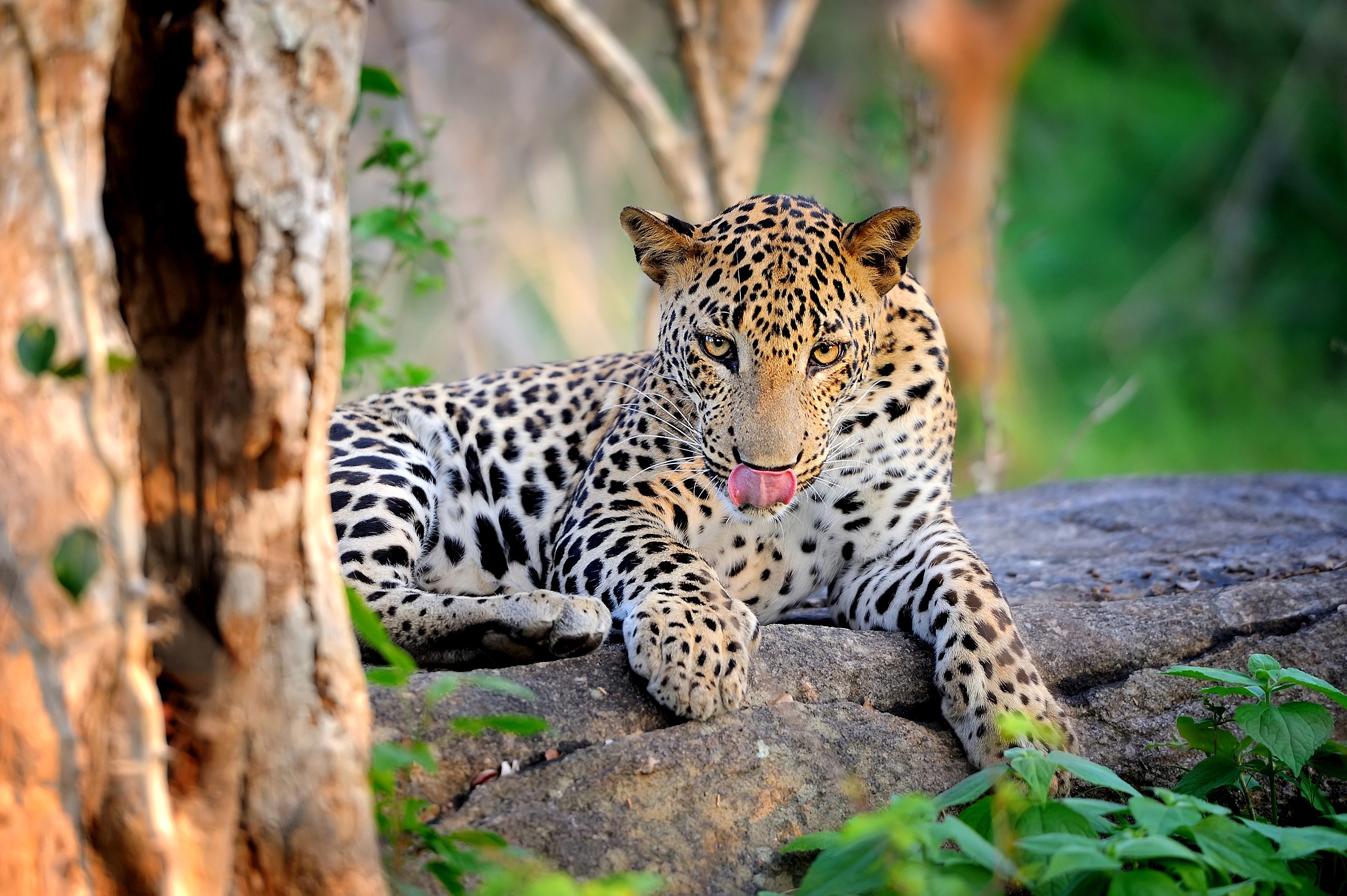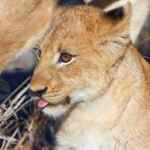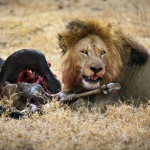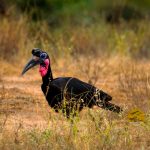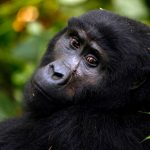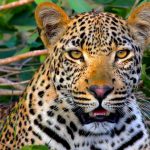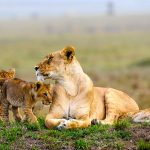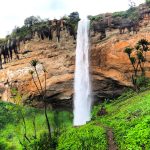African Leopard: The Majestic, Elusive Hunter of the Savanna.
The African Leopard is an animal that has been symbolic of power, agility, and survival in the wild. Scientifically known as Panthera pardus, the leopard is possessed with a distinctive rosette-patterned coat and an adaptive nature that makes this animal one of Africa’s most elusive predators. From dense forests to dry savannas, the adaptability of the African leopard has allowed it to thrive across diverse ecosystems. This guide explores some things one would like to know about the traits of this extraordinary feline, its behavior, habitat, and conservation status.
Physical Characteristics: Beauty in Every Rosette.
They are medium-sized big cats, larger than lions and tigers, yet incredibly strong for their size. Usually, leopards weigh about 50-90 kg (110-200 lbs), with males notably larger than females. Sleek and muscular in structure, that would fit with stealth, speed, and strength, leopards manage to become skillful stalkers of prey.
But its most striking feature is, of course, its coat patterned in rosettes that to this day provide camouflage. These render particularly good camouflage while on the savannas of golden grass or under a dappled light upon forest canopies. Unlike the cheetah’s solid black spots, the leopard’s rosettes are open circles with a light center to help blend each individual seamlessly into their surroundings.
Habitat and Range: Masters of Adaptation.
The African leopard is one of the most adaptable big cats found on every continent. From tropical rainforests to mountainous terrains, savannas, semi-deserts, they have adapted even to the edges of urban areas in many places. They are commonly found across the countries of Uganda, Zambia, Tanzania, Botswana, Kenya South Africa, Rwanda, among others.
Because leopards are arboreal, other than most large predators who find their hunting grounds on open landscapes, they can be found spending most of their time in trees. This adaptability lets them live and hunt in environments that might not be as easy for other big cats to handle. They use the trees to scan the horizon for prey, stash food away from other predators like hyenas and lions, among other uses.
Diet and Hunting Techniques: Skilled and Solitary Predators.
Leopards are opportunistic feeders with a highly variable diet that includes over 90 prey species. The small and medium-sized ungulates, such as antelopes, gazelles, and Impalas, make up their primary victims; however, when needed, they attack small mammals, birds, and even insects. Leopards can kill animals weighing as much as three times greater than their own body weight, showing how powerful they are in comparison to their size.
Ambush predators, leopards rely on stealth rather than speed. They closely approach their quarry before unleashing a swift and powerful pounce. After the kill, the leopard would often drag it up into a tree to protect the meat from other scavengers. This behavior of hauling its kill into trees is peculiar with the leopards and reflects great agility and strength because they were able to drag prey almost equal in weight to their body weight high into the canopy.
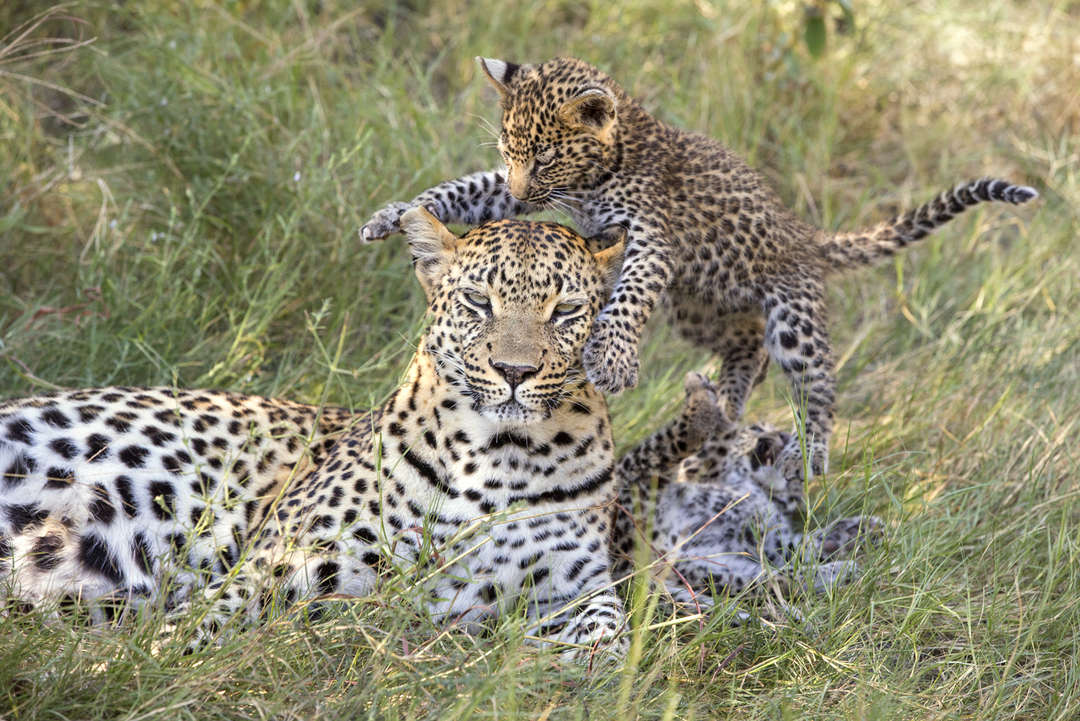
Behaviour and Social Structure: The Solitary Big Cat.
Unlike the highly social lion, leopards are solitary. There exists a territorial adult leopard, with scent markings and scratch marks on trees. The territories of males often overlap with those of several females, and though usually solitary, leopards come together briefly for mating.
Leopards do most of their hunting at night, and this partly has to do with the fact that they are much harder to spot in dark conditions. Nocturnal behavior is just another adaptation that can make life much easier without confrontations with larger predators, such as lions and hyenas.
Reproduction and Longevity: The Life Cycle of a Leopard.
Females reach their reproductive maturity at an age of approximately 2-3 years and usually mate once in every two years. After a gestation period of 90-105 days, one female gives birth to 1-3 cubs, which she then hides in dense vegetation or rocky outcrops against predators. The leopard mother is very caring and changes her cubs’ hiding place quite frequently to minimize the risk of detection.
The cubs will remain with their mother for as long as two years before they finally set out on their own. During this period, they learn to survive, such as hunting and climbing. Their life expectancy in the wild is 10-15 years, while in captivity, they reach a maximum of 20 years since the threats found in the wild are absent.
Conservation Status: A Future Under Threat.
Currently, the leopard is listed as “Vulnerable” in the IUCN Red List. The major threats for leopards include habitat loss, human-wildlife conflict, and poaching. Leopards are sometimes killed by farmers seeking to protect livestock or by hunters for their beautiful pelts, despite legal protections in many countries. In addition, trophy hunting in some regions threatens them, even though such hunting is strictly regulated in most countries.
The involvement of eco-tourism, assisted by conservation organizations, helps to raise economic motivation for local communities to protect these animals and minimize human-leopard conflict. There is now an increasing focus on how to create protected wildlife corridors that allow leopards to move freely between different habitats-a matter of crucial importance for the maintenance of genetic diversity.

Where to Spot African Leopards in the Wild.
It is almost magical for the traveler to catch sight of an African leopard in the wild, although it goes without saying that due to their elusive nature, spotting one can be a challenge. However, there are places in Africa known for leopard sightings. Among them are the following:
Murchison Falls National Park, Uganda.
The largest national park in Uganda, Murchison Falls is a verdant haven housing a wide variety of game, including the African leopard. Leopards are often seen in the southern sector, making their dens and using the dense vegetation of the park to camouflage them. They found their homes also from areas in front of the Nile River up to sometimes resting in trees and stalking prey. With its mixture of woodlands, grasslands, and riverine areas, the Murchison landscape affords it one of the best leopard habitats in Uganda.
Akagera National Park, Rwanda.
Akagera National Park is Rwanda’s largest protected wetland and the country’s only savanna, off which has recently become famous because of its big cat reintroduction. Leopards are rare in the park but may sometimes be seen, especially when making early morning or late evening game drives, which are considered the best times when they are active. The diverse landscape comprising savannas, woodlands, and lakes offers the best shelter for leopards. Besides, Akagera hosts other major predators; hence, a game drive here is quite comprehensive.
Maasai Mara National Reserve, Kenya.
Maasai Mara has one of the most concentrated leopard populations in Africa, and hotspots include the Mara Triangle. Here, leopards are often considered to be tree-lounging, and their rosettes tend to blend into the different shades of sun-dappled foliage. The open plains mixed with riverine forests of Mara make an ideal setting for leopards, and with some decent guides, this most elusive cat can be found.
Serengeti National Park, Tanzania.
With its acacia-studded plains, Serengeti is an ideal environment for leopards, which are seen on top of tall trees at an instance rest. These animals are regularly seen near the Seronera River and other water spots where they lie in wait to get prey. The leopard sightings are common in the Serengeti on game drives, especially in its most remote areas.
South Luangwa National Park, Zambia.
South Luangwa is primarily a leopard haven along the Luangwa River and is viewed by many as one of Africa’s premier leopard-viewing destinations. In fact, with the high concentration of leopards within the park, leopard sightings are rather common, even on night game drives. Combining dense vegetation with open riverbanks creates an ideal environment for leopards to thrive in and hunt.
Kruger National Park, South Africa.
Kruger National Park has one of the highest recorded densities of leopards in Africa. Leopards are seen throughout the park and notably around Sabi Sands. With a lot of trails and game routes in the park, safaris often afford tourists opportunities to closely see leopards while on game drive, or get lucky and spot one from a lodge viewing deck.
Moremi Game Reserve, Botswana.
Moremi forms part of the Okavango Delta and is one of the premier places to see leopards on a regular basis. The leopards of this area are more tolerant of safari vehicles and thus provide better viewing opportunities than elsewhere. Because of the combination of wetlands with woodlands, a variety of prey species are attracted here-ideal hunting grounds for leopards.

Our Remarkable Packages to See Leopards on a Safari in Africa.
22 Days Best of Uganda Wilderness Adventure
18 Day Exploring Uganda Safari
14 Days Uganda and Kenya Wildlife Safari
14 Day Uganda-Rwanda Wildlife and Primates Safari
10 Day Highlights of Uganda Safari
9 Day Kenya Wild Safari Adventure
8 Day Gorillas-Chimps and Big Five Experience
8 Day Best of Tanzania Wildlife Safari
7 Day Kenya Wildlife Safari Tour
6 Day Gorilla Trekking and Queen Elizabeth
5 Day Serengeti and Lake Manyara Safari
5 Day Maasai Mara and Lake Nakuru Safari
4 Day Tanzania Wildlife Safari
3 Day Best of Akagera National Park
3 Day Ngorongoro Magical Adventure
Conclusion: Celebrating the Elusive Panther.
The African leopard is an icon of the wilderness, speaking to resilience and the prowess of adaptation. It is one of the most beloved animals in Africa because of its beauty, intelligence, and remarkable ability to survive in the harshest environments. It is here that conservation and responsible eco-tourism can instill a glimmer of hope that future generations will see the splendor of a leopard moving through the wild, silent step by silent step.
Tourism can help in spotting the African leopard in its natural habitat by visiting Africa’s stunning reserves and national parks with tour operators who are ethically sound and theoretically in the mainstream of wildlife conservation. Viewed in their natural environment, the memories of these creatures are unforgettable and serve to help ensure this legendary species is retained for generations to come.

